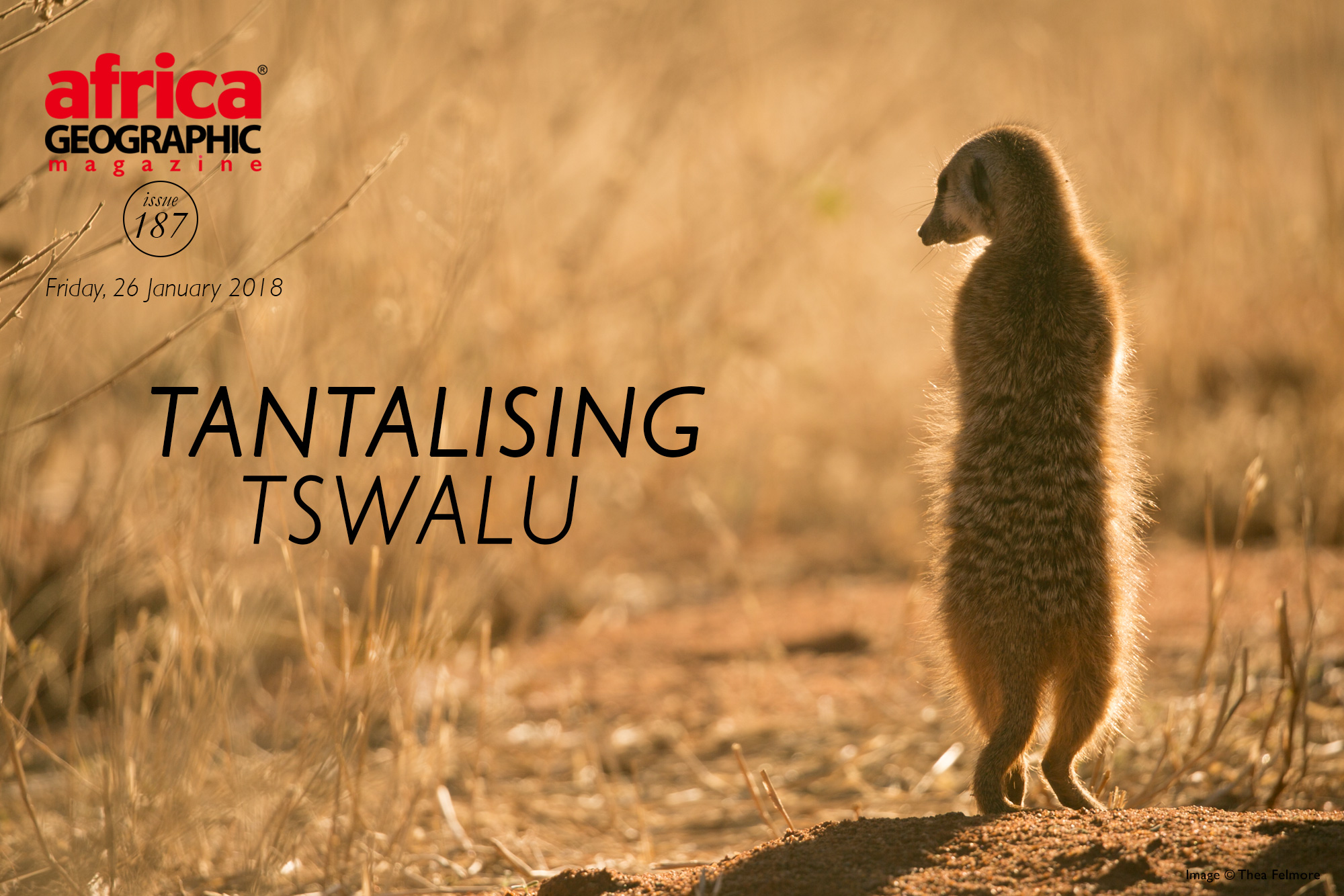
The Kalahari's diamond in the rough


It was like a scene out of the movie Jurassic Park. You know, that adrenaline-fuelled, chaotic scene when the bad guys arrive on the island in their vehicles and speed through the bush while dinosaurs scatter out of their way as they hunt for the ultimate dinosaur trophy. Well, this was like that, except I was on a Land Rover flying through the Kalahari bush with a guide at the wheel, with two other Landies driving parallel about 50 metres away. And rather than dinosaurs flanking our sides, there were wild dogs, and they were the ones hunting…

While trying not to lose sight of the dogs – who had transformed from big-eared, playful puppies to racing greyhound hunters in a millisecond – the guide weaved us around and through the scrubland bushes, dodging porcupine burrows and camel thorns, and it was here that I briefly questioned how on Earth I was here, in the middle of the southern Kalahari, when only just that morning I was still at home in Cape Town.
Well, it all started with a question.
“How would you like to go there?” my boss said, pointing to the screen displaying the most luxurious-looking lodge, seemingly in the middle of nowhere. My first thought was that it looked stunning; my second was: seriously?
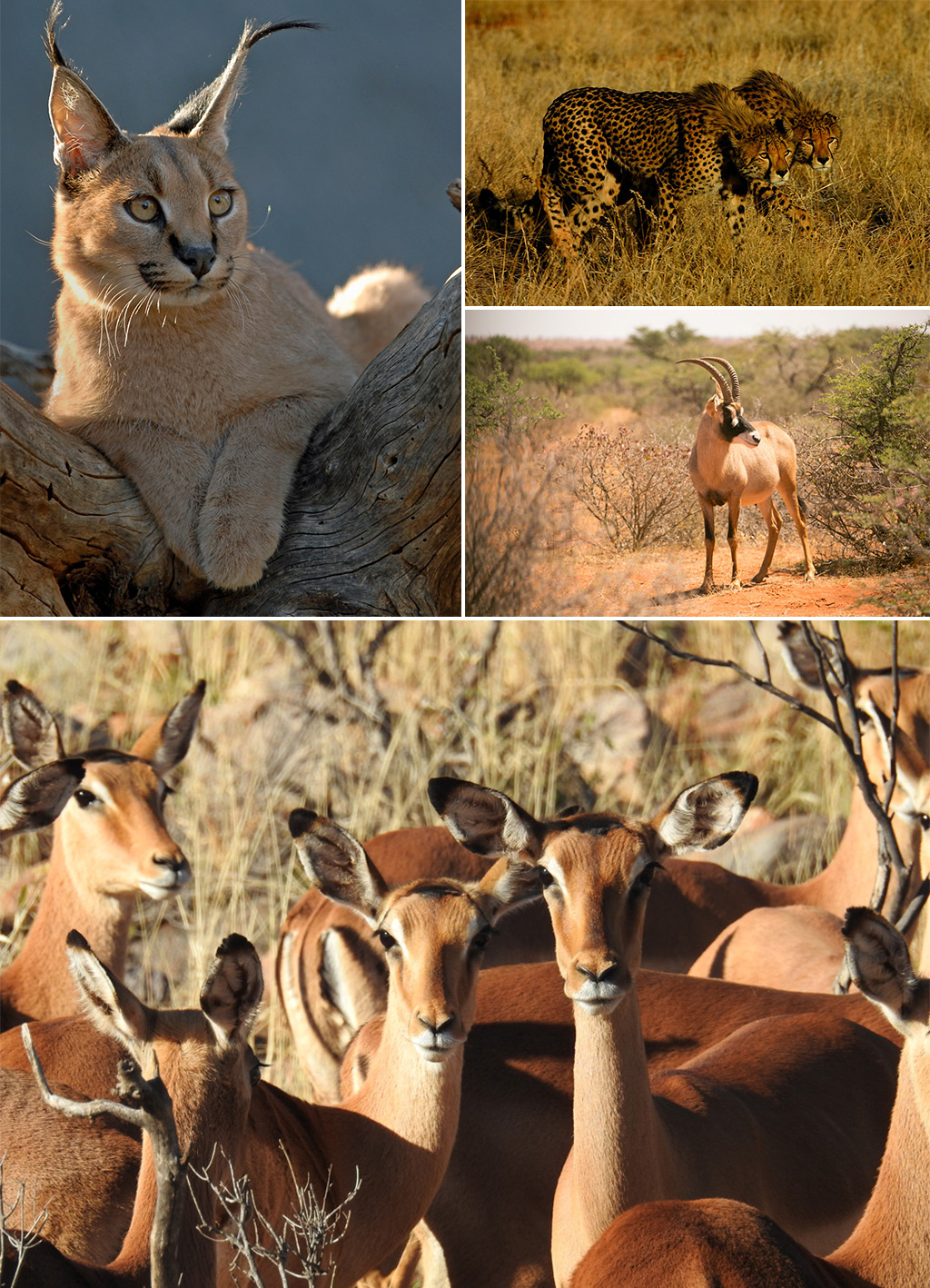
LEAVING ON A (PRIVATE) JET PLANE
Before I knew it planning was underway to send myself and our travel director, Christian, to Tswalu Kalahari Private Game Reserve in the southern Kalahari – a malaria-free, five-star exclusive lodge owned by the mining magnet Oppenheimer family – to experience the ultimate ‘bling safari’, accompanied with a level of service, cuisine and accommodation that would come to exceed all my expectations (and far beyond anything I could afford). This would be even more luxurious than the Namibian desert flying safari I recently enjoyed.
From Cape Town International Airport we were whisked away in a private jet from the Oppenheimer’s private hanger, Fireblade Aviation, flying directly to Tswalu’s airstrip in a seemingly brief two-hour flight.
The deep red sands of the Kalahari greeted us as we stepped off the plane and were directed to the ‘bush’ terminal where ice-cold wine and snacks were served while our bags were loaded into the Landies by our guide, Julian, and tracker, Ari. The ‘bush’ terminal, an open-air thatched building, had all the necessities required to freshen up before leaving for the lodge. It even included some entertainment, provided by the dozens of sociable weavers who reside inside a massive nest built under the thatch roof – they were constantly darting in and out from the numerous chambers, providing some great photographic opportunities.
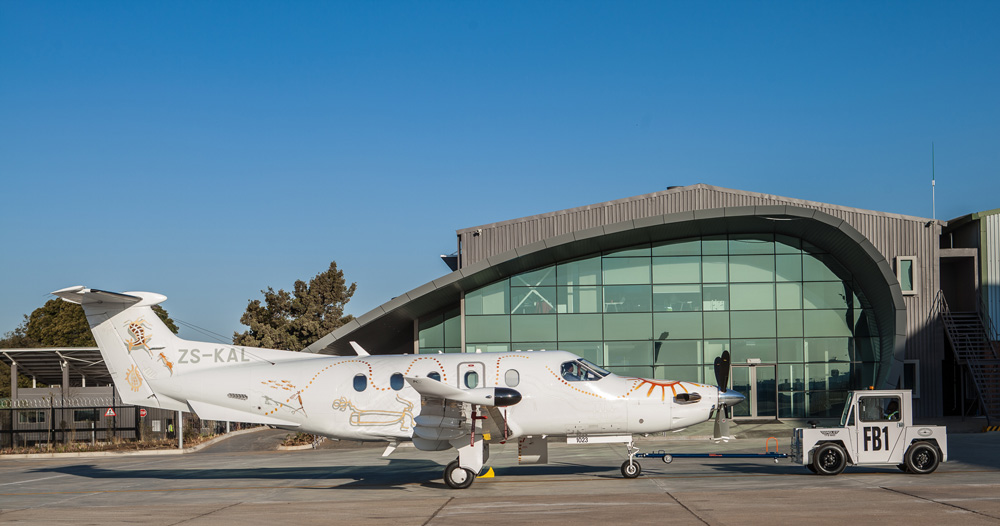
A WARM WELCOME
We arrived at Tswalu’s The Motse lodge to warm hand towels and more refreshing drinks. From the moment I got off the Landy, I felt incredibly welcomed by all the staff I met – each one taking time out from their duties to come and introduce themselves. Everyone seemed to know my name – it was as if I was returning home to a large, extended family, rather than a first-time visit to a private, upmarket lodge. It was refreshing to be in such a friendly, welcoming atmosphere, and I was excited at the thought of what the next three days could hold in store for us.
Christian and I were staying in one of the three family legae (“dwelling” in Tswana) – there are nine legae altogether – where we each had our own room with en suite bathroom and outdoor shower. Massive king-sized beds faced large glass doors that provided unobstructed views of the Kalahari wilderness. As there are no fences between the legae and the wilderness, one of the first rules we were told was never to leave our patio and walk into the bush – who knows what lies in wait?
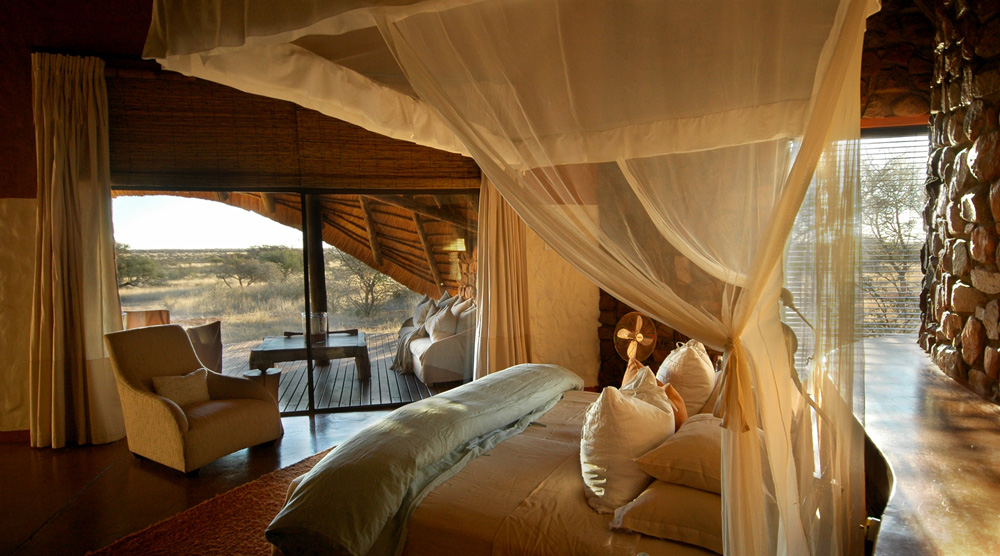
With that in mind, I was fervently scanning the landscape from the comfy of my excessively large wicker chair with a drink in hand – having raided the drinks cabinet as one does… – when all of a sudden, my eye caught something small, slinking over towards a hole about two metres away from the patio. I immediately got Christian’s attention from where he was sitting, and we quickly identified the stealthy animal: a Cape fox!
Suddenly she was joined by four baby foxes that zoomed out of their burrow to drink from her. Christian and I just looked at each other, our faces as expressive as an excited mime. We pulled a Matrix move stealthily and silently reaching for our cameras, to not disturb the mother and her babies as they went about playing and relaxing right under our noses. What a way to start our Kalahari adventure!

JULIAN AND ARI
The exclusivity of Tswalu knows no bounds as guests each have their own guide and tracker, along with the freedom to decide your daily itinerary, and even when you want to eat – the chef is available 24/7. Don’t forget to fit in a spa treatment as well while you’re planning your day.
Because of this flexibility, the likelihood of spotting another game drive vehicle while out in the reserve is highly improbable. It also helps that Tswalu will only take 28 adults at maximum capacity.
It was fantastic to know that we had Julian and Ari all to ourselves. When asked what we were keen on seeing, we replied: “Everything!” And for how long do we want to be out? “As long as possible!”
And that’s precisely what happened. Every morning we were out by 6 am, returning briefly for lunch and a mini siesta for two to three hours, and then back out until returning for a late dinner at 9:30 pm.
Julian was an incredibly enthusiastic and knowledgeable guide, as well as a keen birder, so he and Christian had a lot to talk about, and were kept quite entertained by the myriad of bird species that they spotted. Ari was a phenomenal tracker, and I was amazed by his eagle-eyed spotting skills – even more so when he spotted a stunning rock monitor under a bush!
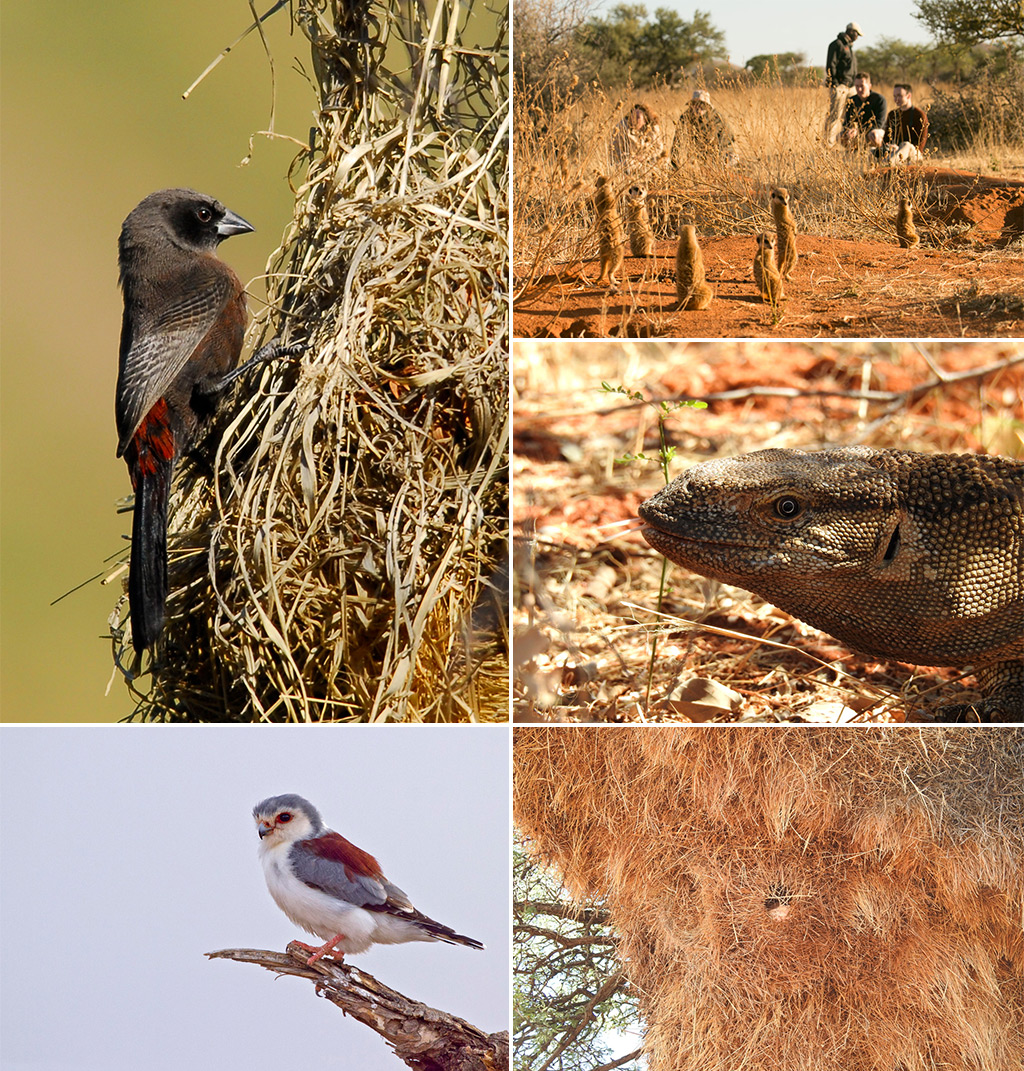
From spending time identifying an array of birds (many that I have never seen before) and getting up close and personal with the habituated meerkat colony, to tracking cheetahs on foot and then quietly observing the southern lion pride for over an hour – I was lost for words.
The four of us journeying around Tswalu non-stop for three full days was just marvellous, albeit exhausting by the end of day three, but we were in our element here in the bush and for that privilege, I would not change a thing!
THE WILD DOG HUNT

So it was here, on the first afternoon drive at Tswalu, where I found myself grinning from ear to ear as we raced side by side with a hunting pack of four wild dogs. Typically only two vehicles are allowed at a sighting, but when it’s a hunt, then three are permitted.
Julian was always on the radio with the other two guides, keeping each other up to date on the fast-paced movements of the dogs, while Ari directed Julian from the tracker’s seat.
Suddenly we lost sight of the dogs, and while frantically searching for them among the thick vegetation of acacia trees and grasses Ari suddenly shouted: “They have something!… They’ve got a warthog!”
Pulling up beside the dogs we watched as they went after a large warthog, which didn’t seem to be putting up much of a fight – Julian suspected that it was not in good health due to the current dry conditions. The next thing the one dog grabbed the warthog’s tail and dragged it backwards. I looked away, suddenly recalling wild dog hunting techniques: they start eating their prey while it’s still alive.
I paled at the thought, at what was happening right before our eyes. It was the first time I was witnessing a hunt and a kill, and unable to watch such an event I turned away, trying to block out the squealing warthog. It seemed brutal, almost heartless in the way the dogs killed the warthog, and even though it was hard to stomach, I reminded myself that this was raw nature, this was the wild, this was real.
“I knew that warthog,” Ari said with a sad smile once everything had calmed down and the squeals were silenced, “it had half an ear missing, so it was easy to recognise”. C’est la vie.
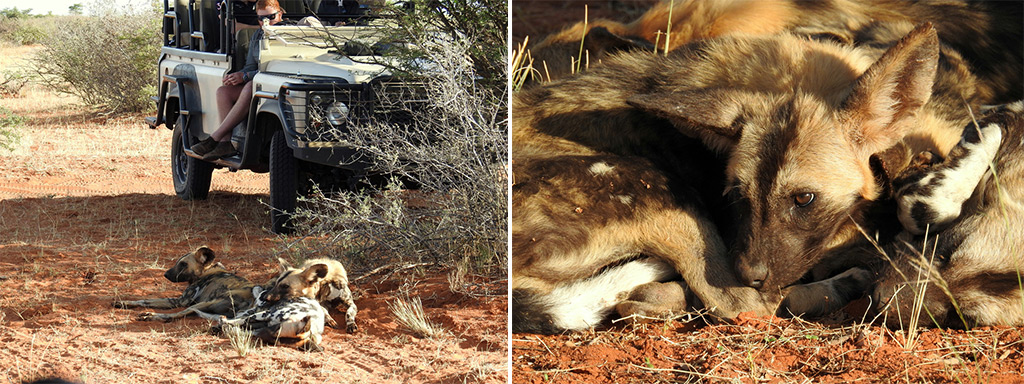

THE BLACK-MANED BROTHERS OF LEKGABA
With such an overwhelmingly eye-opening start to our stay, we didn’t think anything else could top that – but we were wrong.
Early the next morning, we made our way over to the Lekgaba section of Tswalu. This area is separate from the main part where The Motse is located because a service road (from the time when the area was farmland) still runs through, dividing the two properties.
The one thing that Lekgaba has, that the other does not, is Kalahari black-maned lions.
In Lekgaba the landscape seemed different, with rolling hills and mountains, the bush was thicker and the grass longer thanks to the smaller amount of grazers found on this side. It was quite a treat to experience two very different landscapes on the same reserve.
It didn’t take long for Ari to pick up two sets of tracks belonging to black-maned lion brothers, who are approximately eight to ten-years-old. “Just past their prime,” according to Julian. It was thrilling to think that there was a possibility of seeing my first wild lions – black-maned at that! I was starting to get goosebumps.

Another vehicle joined us in tracking the lions and together Julian and the other guide helped each other out with updates over the radio. At the same time, we slowly headed towards their last known sighting near to the border fence.
Then all too quickly, we found them! And it took my breath away. Tears formed in my eyes as I was taken aback with what I saw: two magnificent, incredibly large male lions strolling through the long grass in the morning sun, casually aware of us but at the same time not interested in our presence at all. I almost forgot to pick up my camera as I was mesmerised by their beauty and raw power.
Julian made sure to keep with the lions’ pace, but at one point the one brother came awfully close to us, glancing up at the vehicle and straight into my eyes.
“Are we not too close to them?” I whispered to Julian, “Will we be safe being so close?” I was starting to feel nervous, but Julian assured me that these two brothers were fine with the vehicle, and besides, “they are more interested in the zebra across the road”.
“Zebra? What zebra?”
And sure enough directly across the service road, behind the fence, was a Hartmann’s mountain zebra, following the lions as they kept on walking down the road along the border fence. It was hilarious and surreal at the same time – it was as if the zebra was almost mocking the brothers as if to say: “You want me? You want a piece of this? Well, you can’t, so there!”
I came away with one of the most incredible sightings of my life. I can still clearly remember the thrill of watching those two magnificent creatures walking so close to us, looking into their eyes, and feeling powerless and vulnerable in their presence.

MEETING SIR CHARLES
Of all the animals that Tswalu featured on their list of wildlife species, the pangolin was one that I was most hopeful to see, though I knew the chances were slim.
However, I discovered that an academic researcher from Wits University, Wendy Panaino, who’s studying them as part of her doctorate, would be out in the field on our second night.
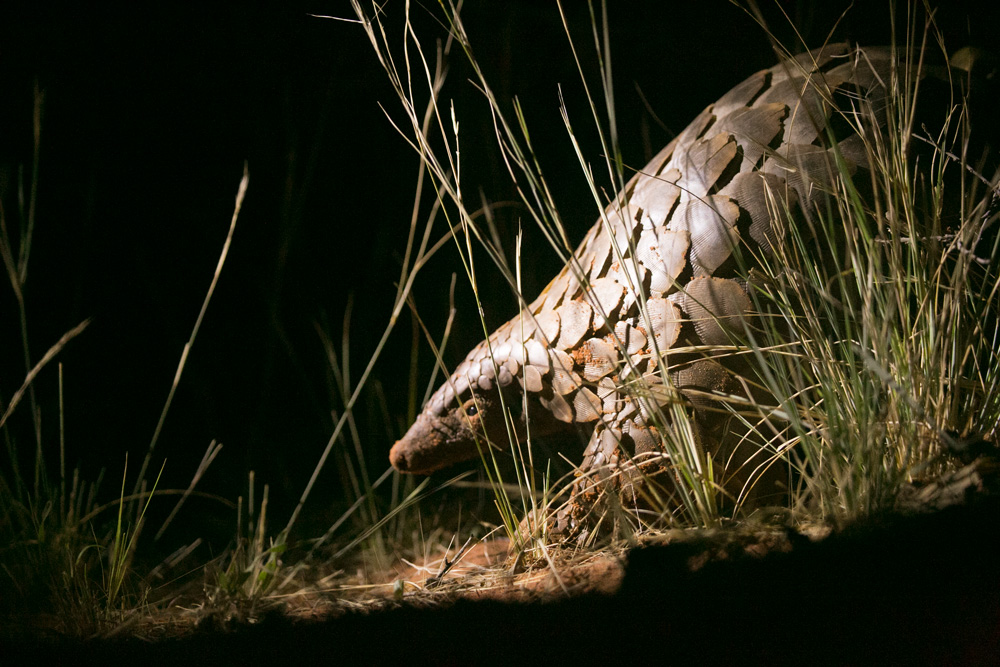
Waiting with baited breath, our prayers were answered late in the evening when we got the call that she was out and with one of the pangolins, ‘number four’, or fondly referred to as ‘Sir Charles’ by the guides.
Having published so many articles about the tragic fate that pangolins are currently going through with poaching and illegal trafficking, it was an ethereal moment when I met Sir Charles. He was going about his night digging and excavating ant nests while I stood a mere metre away spellbound. It was incredible to watch him in action, eating only particular ants and termites that make up his main diet.
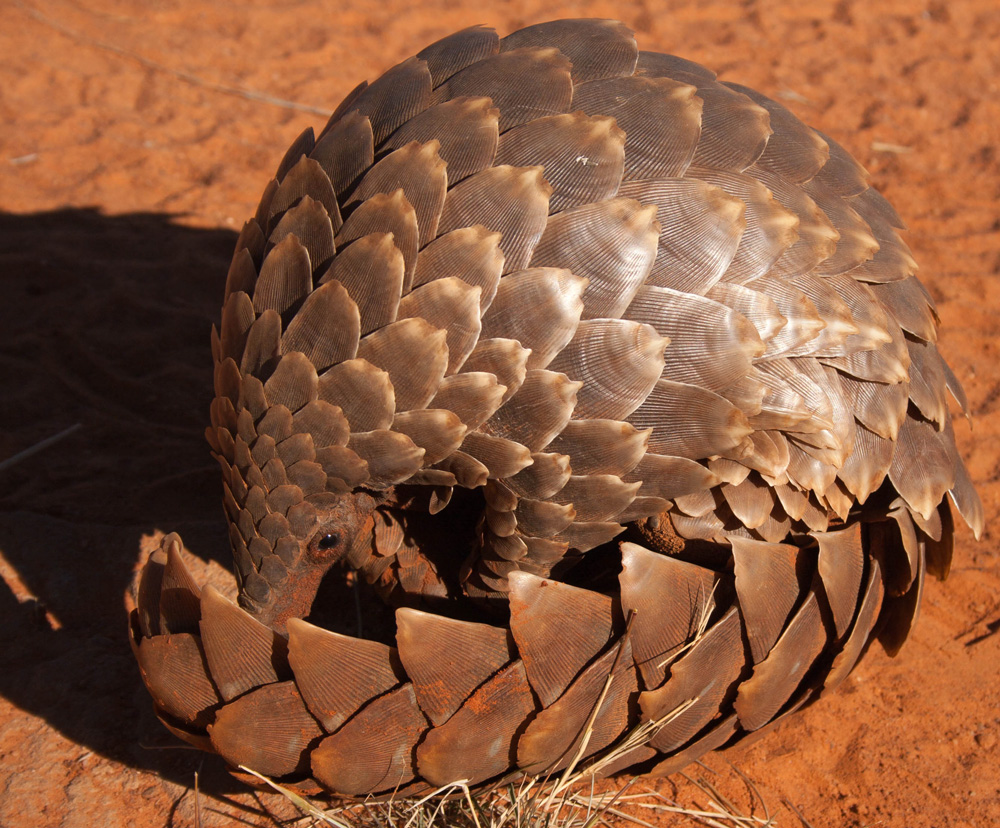
Wendy told me more about her research while we observed Sir Charles rummaging through the bushes. Her doctorate is based around researching the consequences of climate change in the arid Kalahari and how it affects the availability of ants and termites, their social behaviour, the timing of the breeding season, and home range shifts. There are several pangolins that she studies in Tswalu, each fitted with a body temperature monitor and tracker.
We spent almost three hours following Sir Charles around in the dark, watching as Wendy took notes of his movements and collected samples of the ants he was choosing to eat.
Later that night I reflected on my encounter with Sir Charles, and realised that I couldn’t find the right words to describe the sort of emotions I was going through while being so close to such an endangered species – I found myself speechless, honoured and humbled to have met such an incredible creature that night.
Read more about Sir Charles and the rest of the pangolins and the research being done in the Kalahari.
OVERINDULGING WITH NO REGRETS
Tswalu is all-inclusive, and that includes drinks (soft and alcoholic), as well as much as you want to indulge in. Sumptuous dinners take place in one of three locations, depending on the day, and the menu is catered towards your particular eating preferences. The meals are exquisite and decadent – flambéed Magnum ice-cream a la baked Alaska anyone?
Breakfast and lunch can be taken at any time during daylight hours, and I thoroughly enjoyed eggs benedict with salmon for one of my lunches.
Every afternoon the chef lays out a delicious high-tea spread, where sweet and savoury bite-sized snacks were on offer.
Of course, there is also the wine cellar and drinks bar in the lodge bar where you can help yourself to whatever takes your fancy.
Did I mention that there is a pre-game drive breakfast spread in the main lounge for early rises? Everything from croissants, muffins, yoghurt, fruit, cheeses, bread and a range of coffees and teas are available.
And then, of course, there are the midday snacks of nuts, fruit, date balls and rolled omelettes served with filter coffee while out on a drive.
Tswalu is a culinary destination where you bring your appetite and leave your diet at the door.
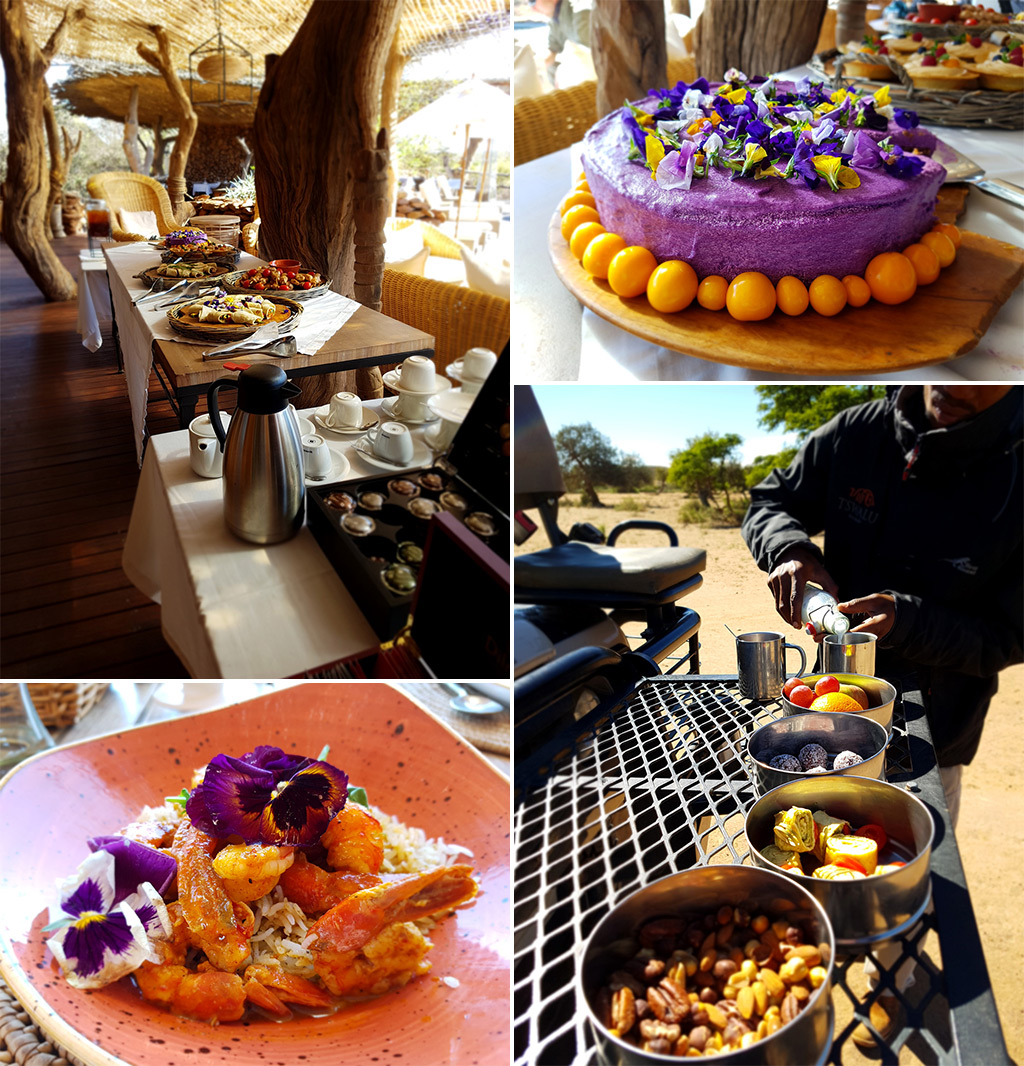
AARDVARK, AARDWOLF… AND AARDAPPEL?
Christian and I were keen on seeing some creatures of the twilight, including the elusive aardvark and aardwolf. However, the most we got out of our evening/night drives were a lot of jackals, spring hares (humorously referred to as ‘Kalahari kangaroos’), and nightjars.
We started to joke that even an aardappel (potato) would suffice.
It was our last evening drive, and the sun was quickly making its way to the horizon as we ventured into an unexplored area, keeping an eye out for the “aards” and brown hyena.

As Julian rounded a corner and drove into a large open area, Ari quickly shot up his hand, pointing to a spot about a hundred metres away, we followed his direction, and our eyes landed on two black rhinos!
We had unknowingly stumbled upon the elusive black rhino mother and her year-old calf.
They were some distance from us, but unfortunately, the wind was not on our side, and she immediately picked up on our presence, and they disappeared into the safety of the thick bush. It was unbelievable luck to come across such a sighting (a first for me!), and in celebration, we brought out the sundowners and observed as the blanket of diamond stars began covering the darkening sky.
Sipping on gin & tonics, we reminisced about our brief but action-packed adventure in the wildlife-rich Kalahari, on how it had been such a phenomenal, once-in-a-lifetime experience for me.
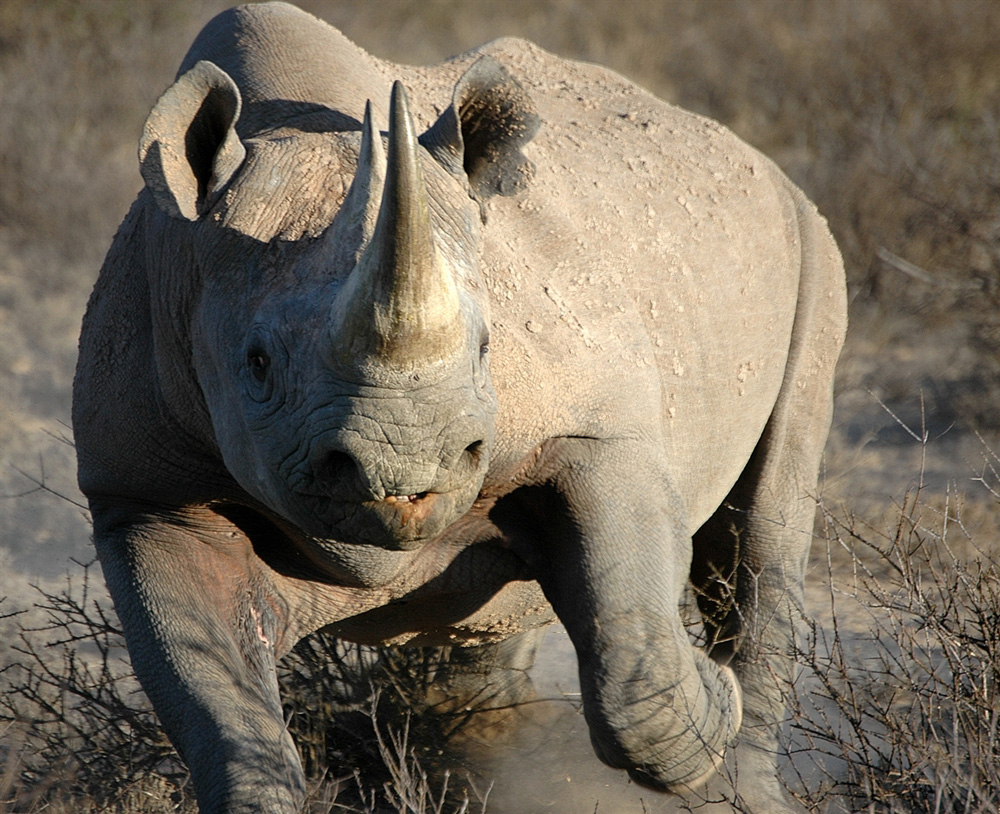
Just as we were finishing up, we suddenly heard what sounded like thunder emanating from the darkness. It was deep, constant, and coming closer. Ari spun around, hands cupping his ears as he tried to pinpoint the source. It was the rhino, and according to Ari, she and her calf were aiming for the waterhole nearby, charging through the bushes in the dark. It sounded terrifying, and immediately I was looking for the quickest route into the Landy.
Fortunately, she must have taken a wide detour to the waterhole as she never appeared, but it was still a close call, especially in the dark where the vegetation was melting into the darkness.
Adrenaline pumping and eyes wide, we all looked at each other, nervous laughter spread through the group as we realised how close we were to meeting the rhino and her calf up close.
We decided that maybe it was best we packed up and headed back to the lodge for dinner… though… on second thought, perhaps just one more gin & tonic for the dusty red road. ![]()

ABOUT THE SOUTHERN KALAHARI
Situated in the Northern Cape of South Africa, the southern Kalahari forms part of the larger Kalahari Desert that covers 9,000,000 km² of arid to semi-arid land covering most of Botswana and parts of Namibia and South Africa.
The name Kahalari is derived from the Tswana word “Kgala”, meaning “the great thirst”, or Kgalagadi, meaning “the waterless place”.
The southern Kalahari is also known as the ‘green’ Kalahari due to its location and climatic conditions – as it receives more rain than the central Kalahari.
It has been inhabited by Bushman for 20,000 years, who lived as hunter-gatherers in a harmonious relationship with the environment until the influx of Africans and Europeans.
Known for its stunning red sand dunes, vast landscapes and the incredible night sky, the southern Kalahari supports a variety of flora, such as acacias and grasses, and fauna. Animals that live in the region include brown hyenas, the Kalahari lion, leopards, cheetahs, meerkats, giraffes, warthogs, jackals, chacma baboons, and several species of antelope (including the eland, gemsbok, springbok, hartebeest, steenbok, kudu, and duiker), and many species of birds and reptiles.
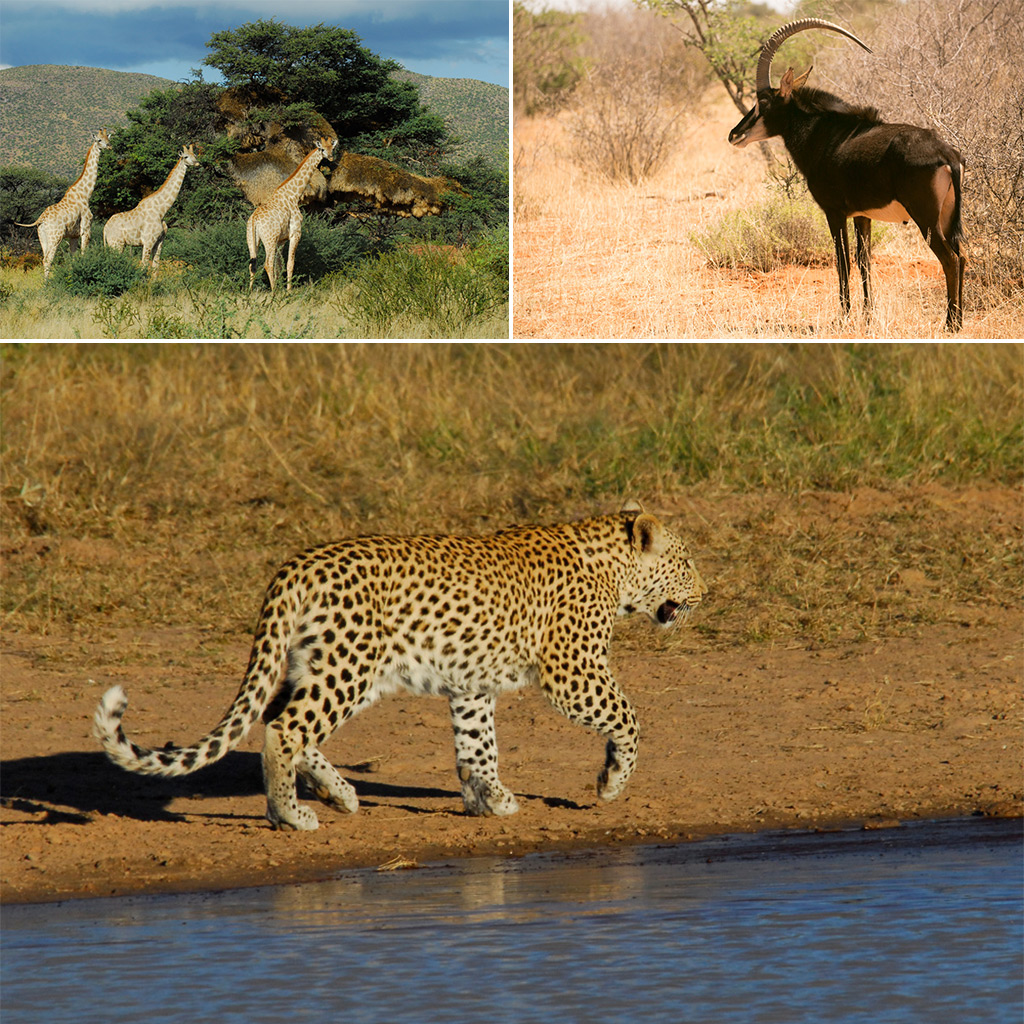
ABOUT TSWALU KALAHARI PRIVATE GAME RESERVE
Tswalu is South Africa’s largest private game reserve, situated on the edge of the southern Kalahari, surrounded by the beautiful Koranneberg mountains. Covering an area of over 1,100 km² (110,000 hectares), it is family-friendly and malaria-free.
Over 80 species of mammals can be found on the reserve, including black-maned lions, pangolin, aardvark and black rhino, together with approximately 240 species of birds.
History
The original reserve was created as a hunting property by Stephen Boler, a British businessman, who bought up 35 farms, totalling some 88,000 hectares. Stephen and Nicky Oppenheimer met only once but instantly recognised each other’s love and respect for the southern Kalahari. When Stephen tragically died, his will specified that Tswalu was to be offered first to Nicky.
The Oppenheimer family took ownership in 1998. Hunting stopped overnight, and the land was given back to itself. Breeding programmes for rare and endangered species, such as roan and sable antelope, were developed and academic researchers were invited in.
Further neighbouring farms have been gradually acquired and transformed, adding more habitats, more of the spectacular Korannaberg mountains, more diversity. Countless buildings have been demolished and removed. And everywhere, the grasses have returned.
Where to stay at Tswalu Kalahari
Check out our preferred camps & lodges for the best prices, browse our famous packages for experience-based safaris and search for our current special offers.
Thea and Christian stayed at one of the three accommodation options at Tswalu Kalahari Reserve: two accommodation options, along with a sleep-out experience.
THE MOTSE
The Motse can accommodate up to 18 adults in nine individual thatch-roof legae. Each legae comes with an en suite bathroom, outside shower, and private patio providing sweeping views of the Kalahari landscape. Three of the legae are family units that come with two separate rooms with their own en suite bathrooms.

TARKUNI
Tarkuni, originally the Oppenheimer’s private villa, was transformed into a homestead that can accommodate up to 10 guests, ideal for smaller groups and family gatherings.
Each room has an en suite bathroom and outdoor star bed. All of the rooms open into an open-plan lounge and dining area. Guests can enjoy a swim in the private pool, or relax in the library or games room. A personal chef, vehicle, guide and tracker are at your disposal while at Tarkuni.
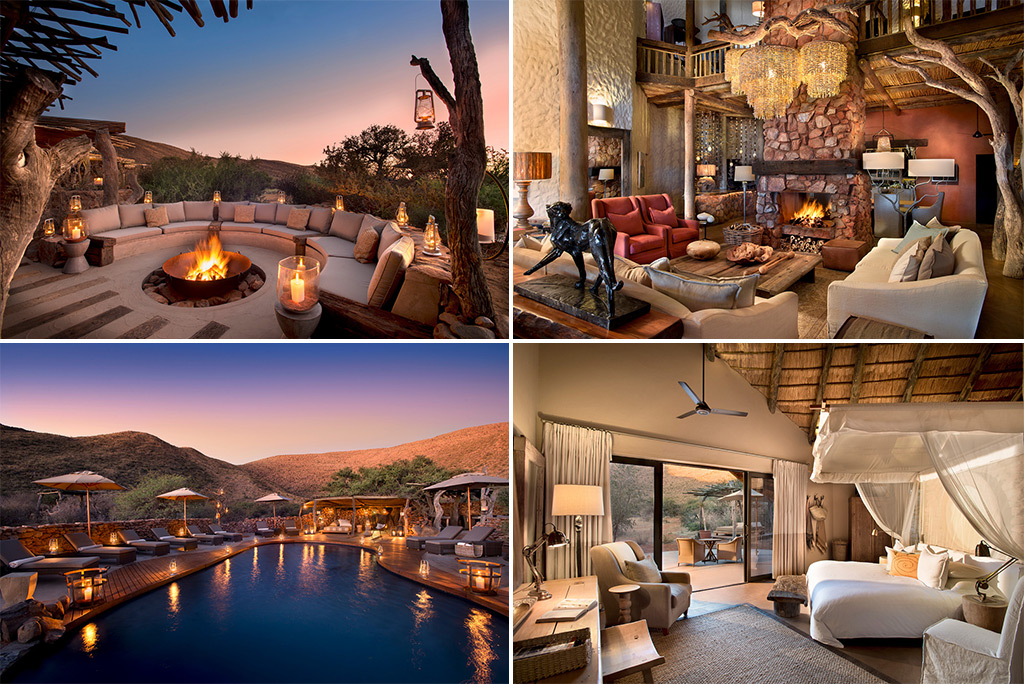
THE MALORI
The Malori gives guests the option of an incredible ‘sleep under the stars’ experience. Built on a raised platform, the Malori is fitted with all the luxuries, including a king-sized bed. A short walk leads you to the outdoor toilet, basin and shower. Guests can enjoy dinner prepared by their guide (or opt to make it themselves) while watching the sun set over the rolling red sand dunes of the Kalahari.


ABOUT THE AUTHOR
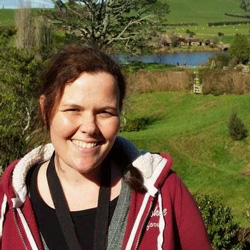 As a former field guide and teacher, Thea Felmore has combined her passion for the English language and love of wildlife to work behind the scenes as a content editor sharing African wildlife, travel and culture with a global online audience. When not in front of the screen she makes time to get out and explore the beautiful Cape Town wilderness in search for her favourite reptile species (and other fascinating creatures, of course).
As a former field guide and teacher, Thea Felmore has combined her passion for the English language and love of wildlife to work behind the scenes as a content editor sharing African wildlife, travel and culture with a global online audience. When not in front of the screen she makes time to get out and explore the beautiful Cape Town wilderness in search for her favourite reptile species (and other fascinating creatures, of course).
To comment on this story: Login (or sign up) to our app here - it's a troll-free safe place 🙂.![]()




